The first photograph was taken by the French inventor Joseph Nicéphore Niépce in the 1820s, but the story of who invented the camera and when involves centuries of innovation and experimentation.
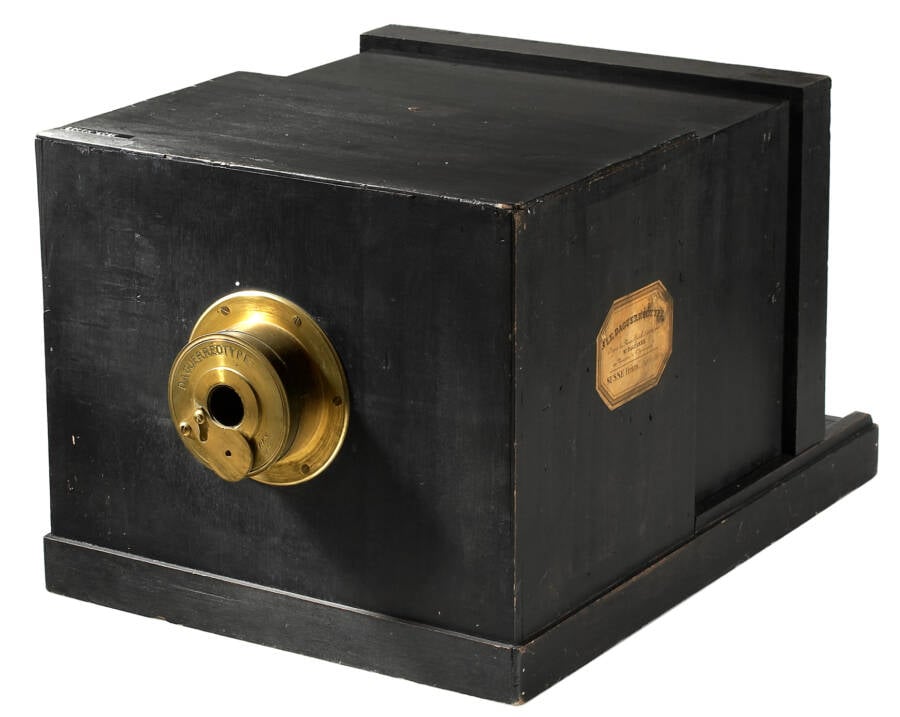
Wikimedia CommonsA daguerreotype camera, commonly used throughout the mid-19th century.
There’s a saying that the best camera is the one you have with you. Today, that likely means your smartphone. In the past decade, however, even cellphone cameras have become advanced enough to take quality images — so much so that several feature-length films have been shot on iPhone cameras. But of course, this wasn’t always the case. There was a time before cameras were a commodity, and a time before that when the idea of a “photograph” was unheard of. So, who do we have to thank for this remarkable invention? Who invented the camera?
The answer isn’t quite as clear-cut as one might think. The camera wasn’t the invention of one lone genius who, by some miracle, independently figured out the magic process of capturing an image on a piece of paper. Instead, the invention was the culmination of centuries of work by countless brilliant minds.
That said, of those inventors, four individuals stand out as especially key figures in the history of photography.
The first is the medieval Arab scientist Ibn al-Haytham, who first described the principles of optics and the camera obscura in his Book of Optics, written around 1021 C.E.
More recently, however, the history of photography as we know it largely begins with the French inventor Joseph Nicéphore Niépce, who used the camera obscura and a pewter plate to create the first permanent photograph in the 1820s. A decade later, Louis Daguerre created the daguerreotype process. Around the same time, English inventor William Henry Fox Talbot developed the calotype.
From there, the process evolved rapidly, paving the way for digital photography, video, and other modern innovations. And it all started with a dark room and a bit of light.
Ibn al-Haytham And The Camera Obscura
Ibn al-Haytham was a pioneering scientist and mathematician of the Islamic Golden Age. Born in present-day Iraq around 965 C.E., Ibn al-Haytham is widely regarded as the “father of modern optics.”
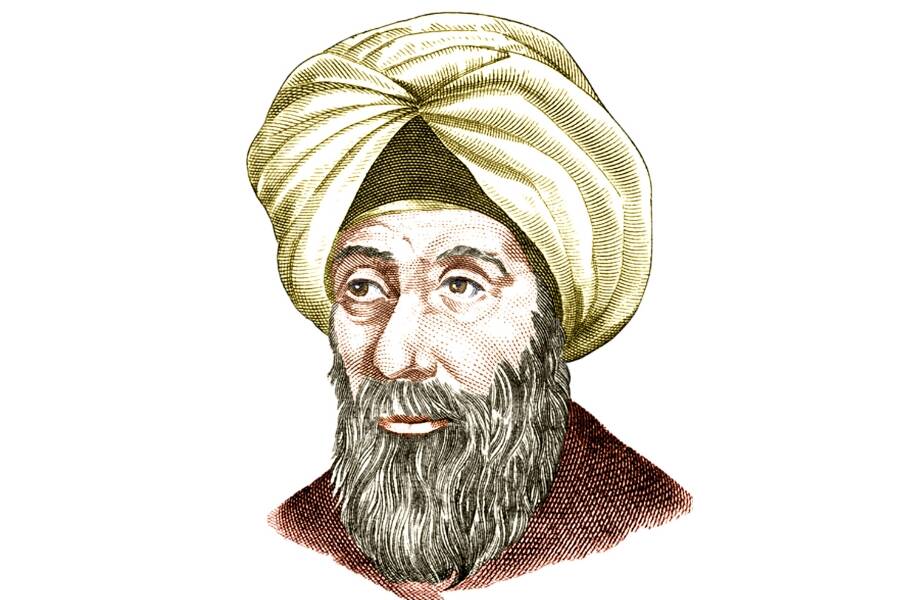
Science History Images/Alamy Stock PhotoIbn al-Haytham’s revolutionary work would later influence a number of Renaissance-era scientists.
Ibn al-Haytham was educated in a wide range of subjects, including mathematics, astronomy, and philosophy — and his work advanced each of these subjects greatly. He questioned Ptolemaic astronomy and conducted detailed studies on the structure and movement of celestial bodies. He likewise made numerous contributions to geometry and number theory.
But he is perhaps best known for the Kitab al-Manazir, or the “Book of Optics.” Over the course of seven volumes written between 1011 and 1021, Ibn al-Haytham laid the foundations for the modern study of optics, which he demonstrated via the camera obscura.
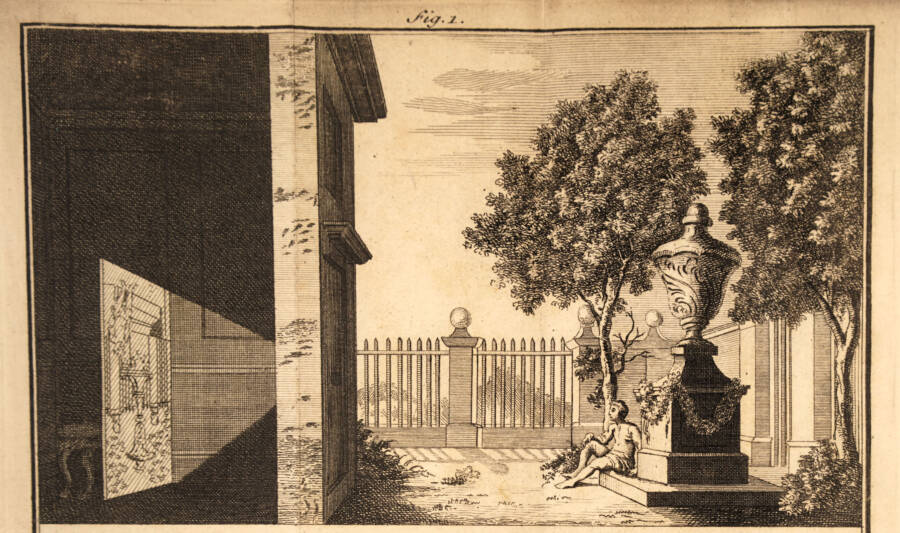
Public DomainAn illustration demonstrating how the camera obscura works.
As early as the 5th century B.C.E., people had been projecting images with this ancestor of the modern camera. Put simply, the camera obscura, Latin for “dark chamber,” is a dark room or box with a small hole or lens on one side. Light from an external scene would shine into the box through that hole, projecting an image on the opposite side — although the image is inverted and reversed.
While Ibn al-Haytham himself did not invent the camera obscura, his early experiments with light lay the groundwork for the invention of the camera centuries later.
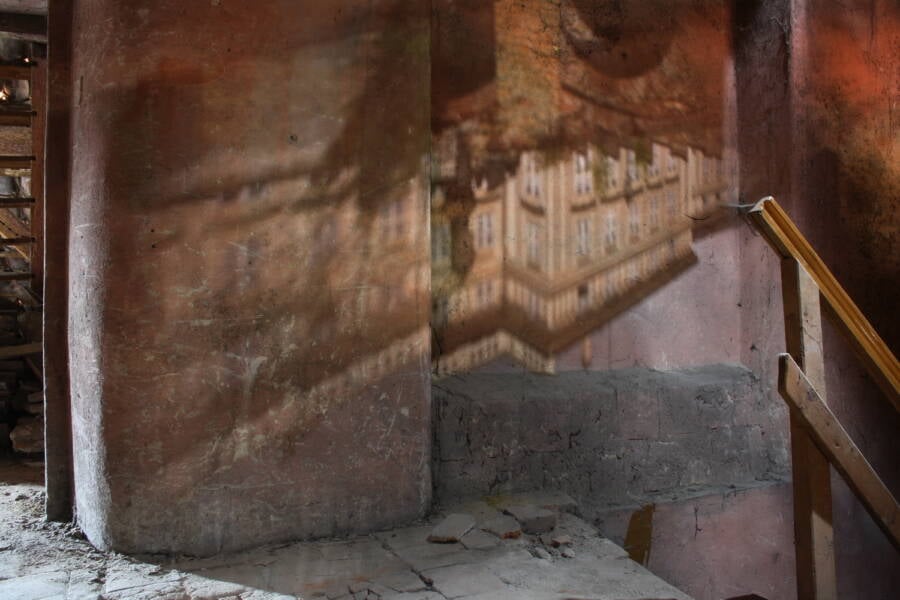
Wikimedia CommonsA modern demonstration of the effects of the camera obscura.
Later, the camera obscura would become an important artistic tool in the Renaissance. Artists like Leonardo da Vinci often utilized the device for perspective studies.
Lenses weren’t added to the camera obscura until the 16th century, but when they were, it marked another major milestone. Suddenly, scientists realized that refractive materials could be manipulated to create images — and from here, the development of the camera would follow.
Joseph Nicéphore Niépce, The Man Credited With Inventing The Camera
Joseph Nicéphore Niépce was a French inventor born in 1765 in Chalon-sur-Saône. He came from a wealthy family and initially pursued a career in academia and the military before turning his attention to scientific research and experimentation, alongside his brother Claude.
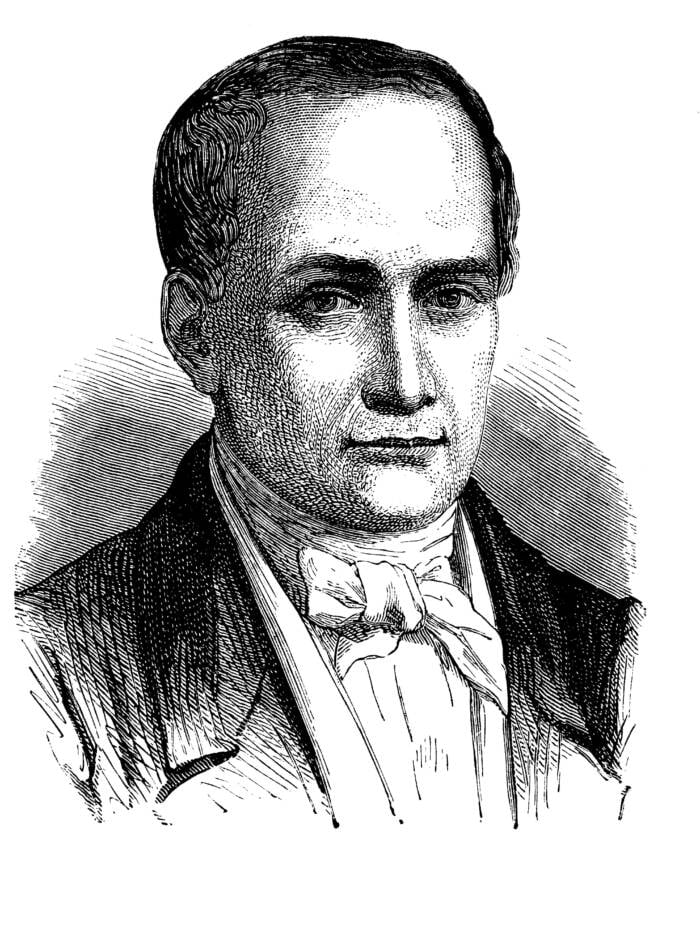
Album/Alamy Stock PhotoJoseph Nicéphore Niépce, the man who took the first photograph.
While the brothers would create a number of inventions — including an early internal combustion engine — Niépce is best known today as the man who took the first permanent photograph.
Niépce had developed an interest in the lithograph, a printing technique that involved creating images on stone or metal and reproducing them on paper. Thinking he could use a similar process to capture light, Niépce began experimenting with the camera obscura in hopes of inventing a way to preserve the device’s images.

INTERFOTO/Alamy Stock PhotoThe camera used by Niépce to capture the world’s first photograph.
Throughout the 1820s, Niépce toyed with various light-sensitive materials. Using bitumen and a pewter plate, he eventually created history’s first-ever permanent photograph in 1826 or 1827, entitled the “View from the Window at Le Gras.” It doesn’t look like much, but it was a landmark moment in the history of photography: In effect, he had invented the first camera .
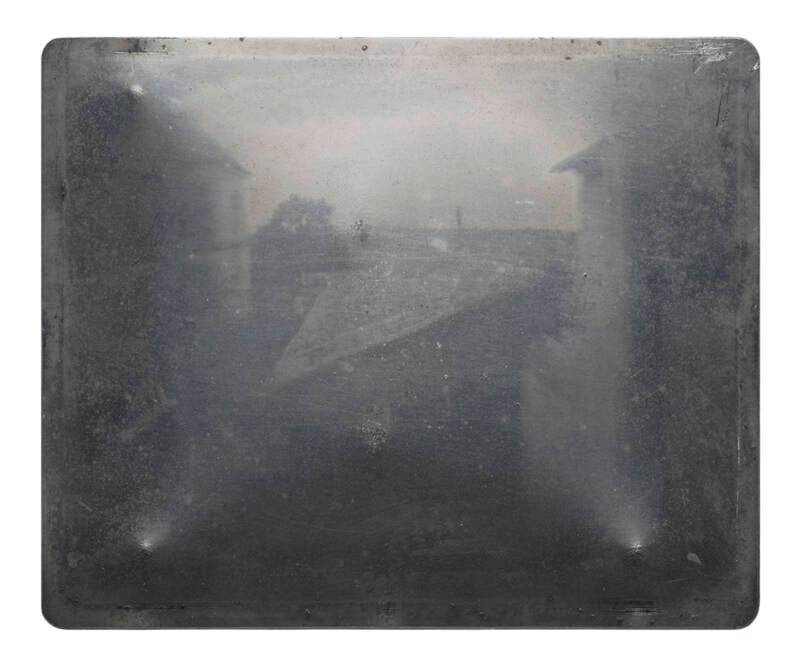
Public DomainThe original heliograph image captured by Niépce, “View from the Window at Le Gras.”
Still, Niépce’s methodology was far from perfect. The image is hard to discern, and it took about eight hours to fully expose. But in 1829, Niépce formed a partnership with another man who had taken a deep interest in photographic processes: Louis Daguerre.
How The Daguerreotype Changed Photography Forever
Daguerre began his career as an artist, primarily focused on painting and scenic design. He, like Niépce, had also begun experimenting with various techniques to capture permanent images. When Niépce found a way to do so, he and Daguerre teamed up to see if they could improve Niépce’s process.
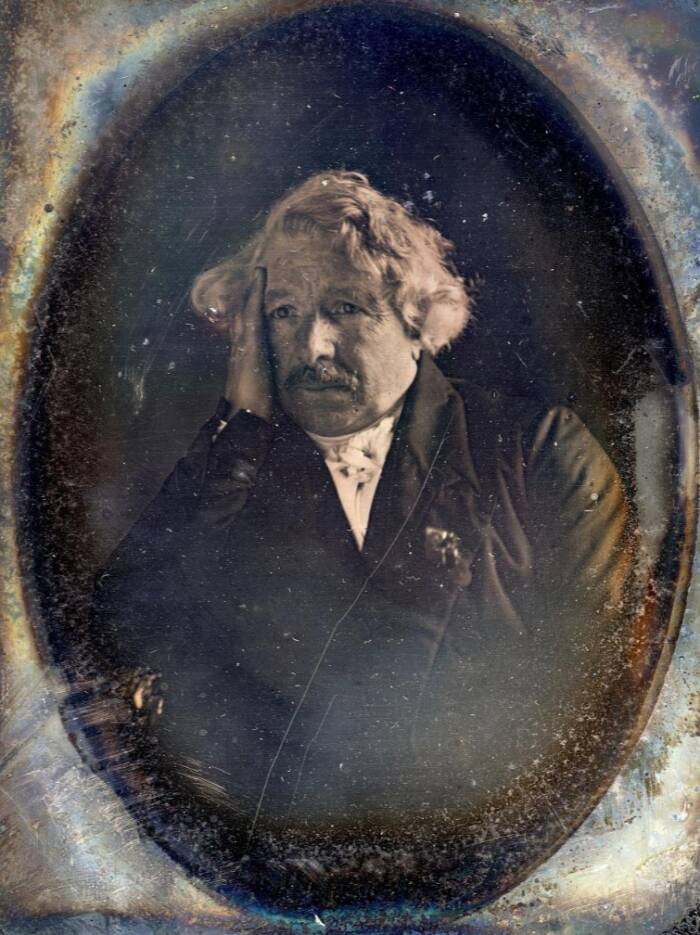
Public DomainA photograph of Louis Daguerre, who helped invent the modern camera.
Unfortunately, Niépce died in 1833 before any significant progress could be made. Daguerre, however, continued their research on his own. Six years later, he unveiled his “daguerreotype process,” a multistep method of producing photographs that utilized a polished, silver-plated copper sheet treated with iodine vapors and a salt solution.
Daguerre’s process still took a long time by modern standards, but it was drastically faster than Niépce’s, taking anywhere from a few minutes to about half an hour to expose, according to B&H Photo. After light from a camera obscura burned an image onto the plate, the image was developed using mercury vapor and fixed in a salt solution, thus rendering the image permanent and no longer sensitive to light.
“The daguerreotype is not merely an instrument which serves to draw Nature,” Daguerre wrote, according to ThoughtCo. “On the contrary it is a chemical and physical process which gives her the power to reproduce herself.”

Public Domain“View of the Boulevard du Temple,” the first photograph to capture human subjects.
Daguerre introduced his invention to the public on Jan. 7, 1839 at a meeting of the French Academy of Sciences. Shortly after, the French government and Daguerre struck a deal: In exchange for the details of his process, Daguerre would receive a lifetime pension. The French government, for their part, then released the details of the daguerreotype process to the world for free, ushering in the first wave of commercial photo cameras.
Around the same time, a British man by the name of William Henry Fox Talbot was developing another process known as the calotype, which allowed multiple copies of a photograph to be made from a single negative — much like modern film cameras.
How William Henry Fox Talbot Helped Invent The Modern Camera
Talbot, like Niépce, was born into a well-to-do family and took an early interest in science and the arts. A polymath, Talbot explored various subjects including mathematics, chemistry, botany, astronomy, and philosophy — all of which contributed to his photographic innovations.
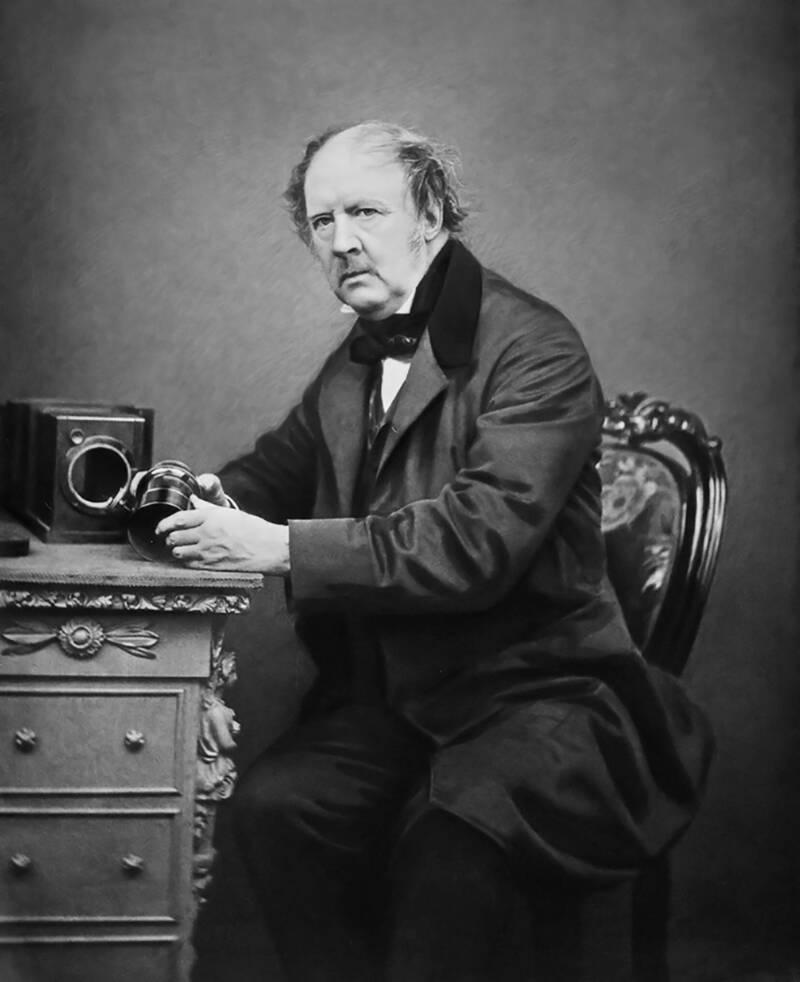
IanDagnall Computing/Alamy Stock PhotoA photograph of William Henry Fox Talbot.
Some of Talbot’s fascination with photographic image recreation stemmed from his frustrations over his own lack of artistic ability. To aid in his sketching, Talbot began experimenting with a camera obscura — which sparked a desire to permanently capture the images it was producing.
“The inimitable beauty of the pictures of nature’s painting which the glass lens of the Camera throws upon the paper in its focus — fairy pictures, creations of a moment, and destined as rapidly to fade away,” he wrote, according to The Met. “How charming it would be if it were possible to cause these natural images to imprint themselves durably, and remain fixed upon the paper.”
In the early 1830s, Talbot developed a process he called “photogenic drawing,” which involved placing objects like plant specimens on paper treated with silver nitrate and salt and exposing them to light, darkening the light-sensitive areas of the paper. The end result was a negative image of the object imprinted on the paper sheet.
Talbot quickly saw the potential in this process and began working to develop it further. In 1841, two years after the daguerreotype debuted, Talbot patented the calotype. The calotype process involved coating a high-quality sheet of paper with silver nitrate, then treating it with potassium iodide to form silver iodide.
After the paper was exposed to light, a latent image formed, which was then developed using a solution of gallic acid and silver nitrate. The developed image was then fixed with sodium thiosulfate to make it permanent.
Unlike the daguerreotype, the calotype’s final image was a negative. However, a positive print could be made from it by contact printing onto another sheet of sensitized paper.

Public DomainThe photographic workshop in Reading where Talbot helped invent the modern camera.
And unlike with the daguerreotype, which only produced a single image, negatives produced by the calotype process could be copied over and over again onto sheets of sensitized paper.
However, Talbot’s process didn’t see the same widespread adoption as the daguerreotype. This was in large part due to Talbot’s insistence on charging licensing fees to use the calotype, making it far less accessible than the free-to-use daguerreotype.
Still, Talbot’s innovations would most certainly influence later photographic techniques. Even in modern film photography, negatives are used to produce photos, and that’s thanks, in large part, to the work of Talbot.
Ultimately, the invention of the camera can’t be attributed to a sole figure. Niépce was technically the first inventor to create a camera that could capture a still image, but it would be unfair to give him all the credit. His work was influenced by the thousands who came before him, and went on to influence the thousands who came after.
After reading about the people responsible for inventing the camera, learn all about the first movie ever made. Then, peruse this gallery of some of history’s oldest selfies.





